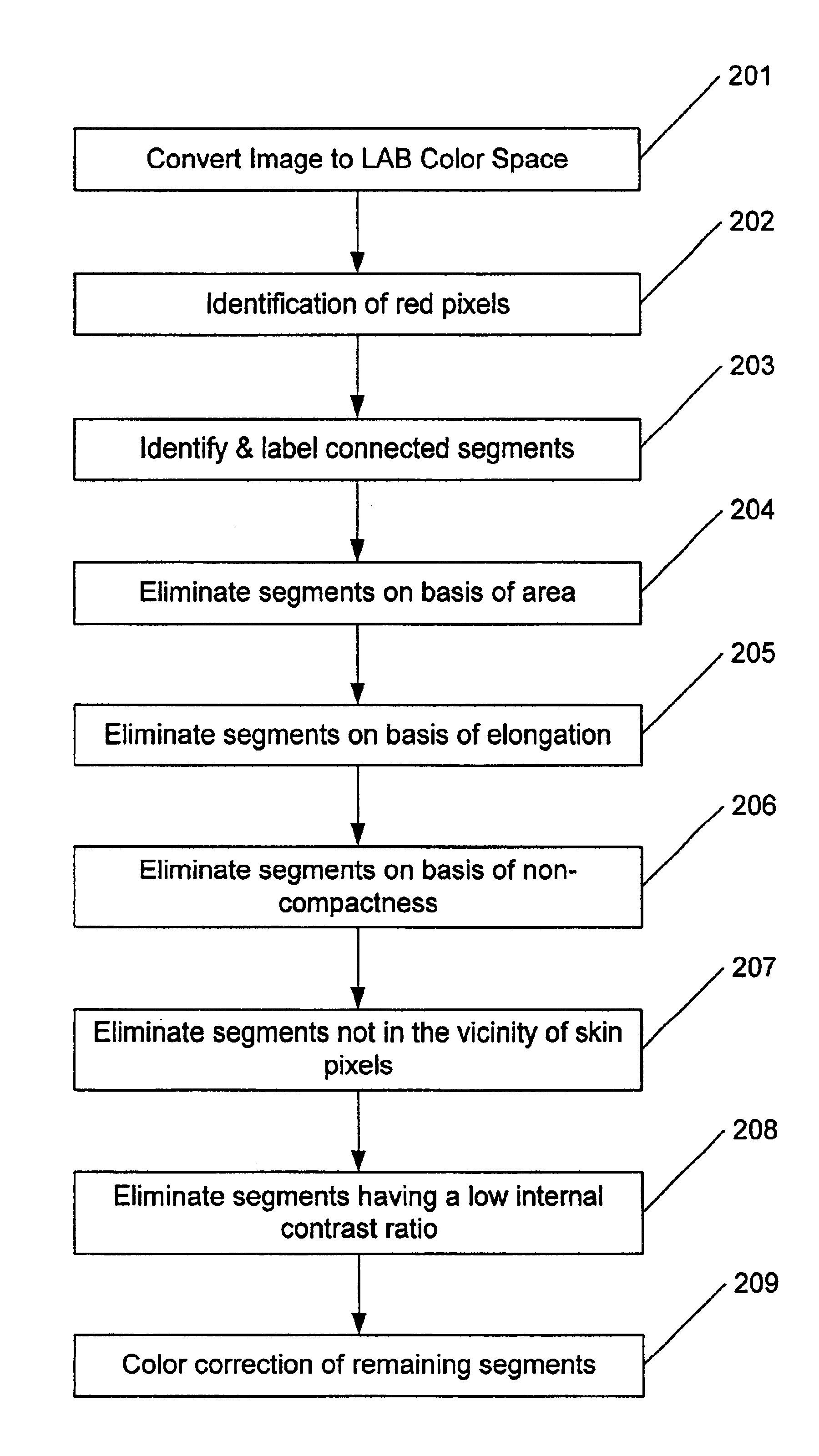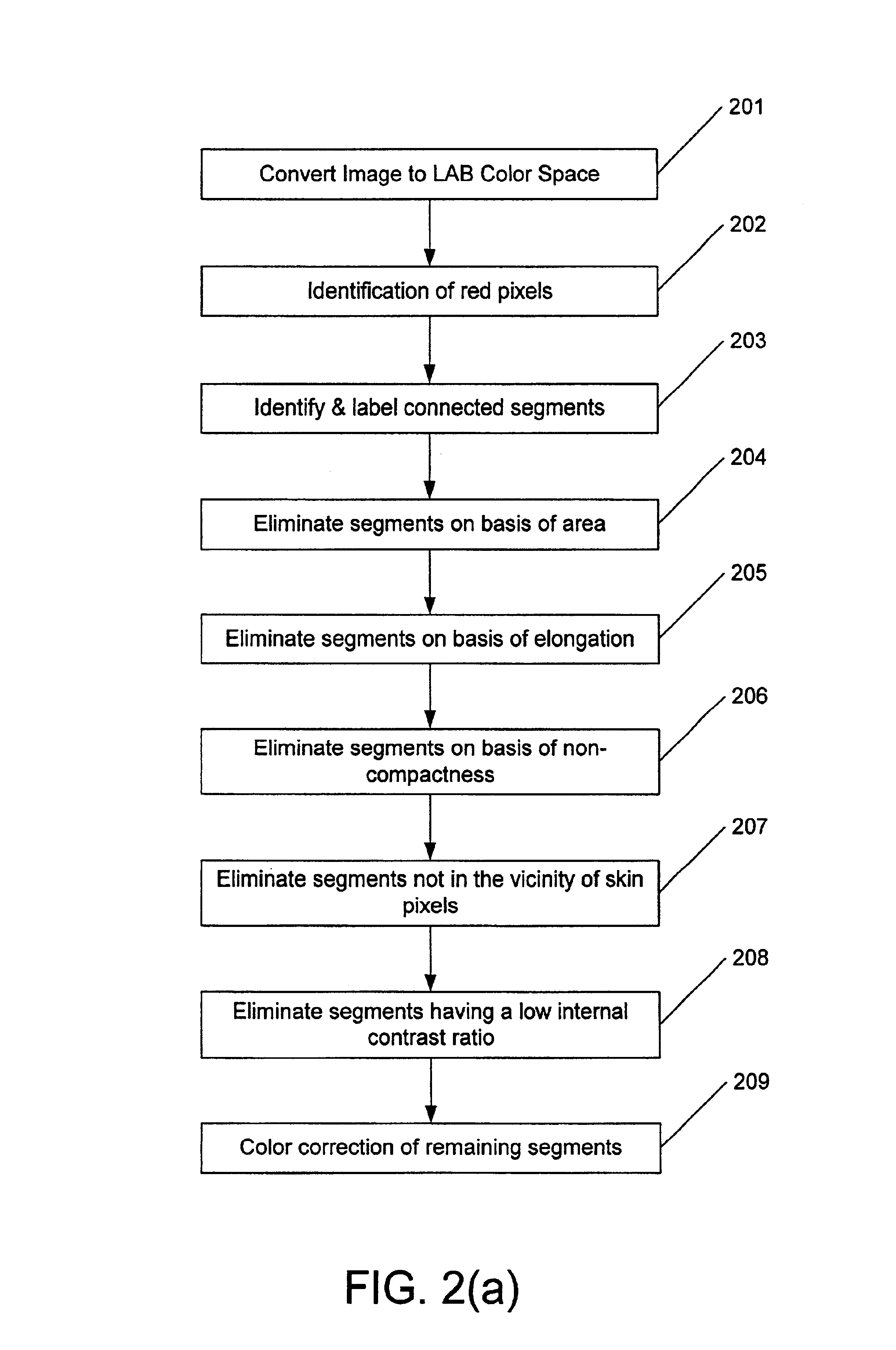Method and apparatus for the automatic real-time detection and correction of red-eye defects in batches of digital images or in handheld appliances
a technology of automatic real-time detection and correction, applied in the field of digital image processing, can solve the problems of disadvantages of prior art approach, almost unnoticeable to an end user, and probably the most common defect in pictures processed, and achieve the effect of accurate and automated
- Summary
- Abstract
- Description
- Claims
- Application Information
AI Technical Summary
Benefits of technology
Problems solved by technology
Method used
Image
Examples
Embodiment Construction
Briefly, the present invention includes a method and apparatus to (i) detect red-eye defects in a digital image without requiring user intervention and (ii) correct these defects by restoring the original eye color without requiring user intervention.
The detection step comprises the following main sub-steps: (a) the image is converted into Lab color space, whereas an Lab color space, also denoted by L*a*b* in technical publications is a well defined close to uniform Luminance chrominance color space, whereas the “L” axis denotes luminance, the “a” axis denotes red-green colors and the “b” axis denotes the blue-yellow data; (b) the image is segmented and red pixels with the correct luminosity to match red-eye defects are labeled; (c) connected segments are labeled in a single raster-scan of the image; (d) segments with inappropriate areas (too large or too small) are rejected; (e) elongated segments are rejected; (f) non-compact segments are eliminated; (g) segments which are not loc...
PUM
 Login to View More
Login to View More Abstract
Description
Claims
Application Information
 Login to View More
Login to View More - R&D
- Intellectual Property
- Life Sciences
- Materials
- Tech Scout
- Unparalleled Data Quality
- Higher Quality Content
- 60% Fewer Hallucinations
Browse by: Latest US Patents, China's latest patents, Technical Efficacy Thesaurus, Application Domain, Technology Topic, Popular Technical Reports.
© 2025 PatSnap. All rights reserved.Legal|Privacy policy|Modern Slavery Act Transparency Statement|Sitemap|About US| Contact US: help@patsnap.com



